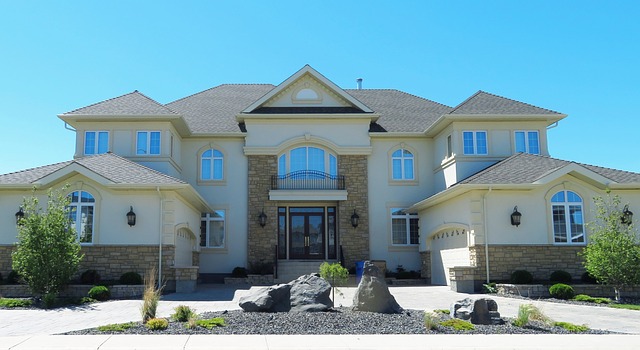Clementi New Condo: A Comprehensive Analysis
Introduction
Clementi New Condo, often abbreviated as CNC, is a prominent development in the vibrant district of Clementi in Singapore. This article aims to provide a detailed exploration of CNC, its significance, and its multifaceted impact on the local and global landscape. From its architectural design to its role in the economy, we will delve into the various aspects that contribute to its status as a key development project. Readers will gain insights into market trends, technological advancements, policy influences, and future prospects, offering a comprehensive understanding of CNC’s relevance and potential.
Understanding Clementi New Condo
Clementi New Condo is a modern residential complex that epitomizes the fusion of urban living with green spaces and state-of-the-art amenities. It is part of the larger master plan for the Clementi area, which aims to transform this district into a livable and sustainable community. The core components of CNC include high-rise residential towers, commercial spaces, recreational facilities, and transportation networks.
Historically, the Clementi area has been an established residential neighborhood known for its tranquility and community spirit. With the development of CNC, this area is set to undergo a transformation, enhancing its status as a sought-after location for both residents and investors alike. The significance of CNC lies in its ability to cater to diverse needs and preferences while maintaining harmony with its surroundings.
Global Impact and Trends
CNC’s design and concept have garnered international attention, influencing urban development projects worldwide. The global trend towards sustainable living and smart cities has been significantly shaped by such innovative developments. Countries across the globe are looking to integrate eco-friendly solutions, intelligent transportation systems, and community-centric spaces into their urban planning, drawing inspiration from CNC’s design philosophy.
In different regions, the impact of CNC is seen in various forms, from the adoption of green building practices to the implementation of integrated transport networks. The development has thus set a benchmark for sustainable living, showcasing how urban spaces can be reimagined to meet contemporary needs without compromising environmental integrity.
Economic Considerations
The economic implications of CNC are multifaceted. It has been a catalyst for property market growth in the Clementi area, attracting both local and foreign investors. The development has stimulated real estate investment patterns, with an increased focus on high-end residential properties and mixed-use developments.
CNC’s role in the economic ecosystem extends beyond real estate. It has created job opportunities across various sectors, including construction, retail, and hospitality. Moreover, it has contributed to Singapore’s position as a leading global city by enhancing its infrastructure and living standards.
Technological Advancements
CNC has been at the forefront of adopting technological advancements to ensure efficiency, sustainability, and convenience for its residents. The use of smart home systems, energy-efficient appliances, and renewable energy sources are just a few examples of how technology has been integrated into this development.
Future potential includes the integration of artificial intelligence in building management, predictive maintenance through IoT (Internet of Things), and enhanced security features. These advancements not only make CNC a cutting-edge residential option but also position it as a model for future smart cities around the world.
Policy and Regulation
The development of CNC is governed by a comprehensive set of policies and regulations that ensure its alignment with national urban planning objectives. The Urban Redevelopment Authority (URA) of Singapore plays a pivotal role in overseeing the design, construction, and management of such developments to maintain high standards of living and sustainability.
The legislative framework includes guidelines for environmental conservation, building codes for safety and accessibility, and zoning regulations that dictate land usage. These policies are crucial in guiding the development’s trajectory and ensuring its long-term viability and acceptance within the community.
Challenges and Criticisms
CNC has not been without its challenges and criticisms. Issues such as affordability, integration with existing infrastructure, and preservation of cultural heritage have been points of contention. To address these concerns, developers and policymakers are exploring innovative solutions like phased development, affordable housing options, and community engagement initiatives.
A strategic approach to addressing the challenges involves a combination of thoughtful planning, stakeholder collaboration, and adaptive management practices. By doing so, CNC can evolve into a model for sustainable urban living that is inclusive and forward-thinking.
Case Studies
Several case studies exemplify the successful implementation of CNC’s principles in different contexts. One such example is the integration of green spaces within the development, which has been replicated in various projects to enhance biodiversity and provide residents with recreational areas. Another case study highlights the effective use of smart technologies in building management, leading to energy savings and improved living conditions. These success stories not only underscore the effectiveness of CNC’s approach but also provide valuable lessons for similar developments worldwide.
Future Prospects
The future of CNC is poised for growth and innovation. As urban populations continue to rise, the demand for sustainable, technologically advanced living spaces will increase. CNC is expected to expand its offerings, potentially including additional commercial and educational facilities, to cater to the evolving needs of its residents.
Moreover, the development’s commitment to sustainability means that it will likely become a testbed for new environmental technologies and practices. This focus on continuous improvement ensures that CNC remains a leader in urban living and an example for other global cities striving for a balance between progress and conservation.
Conclusion
Clementi New Condo represents a significant leap forward in urban development, integrating sustainability, technology, and community at its core. Its impact on the global stage is undeniable, influencing how cities are planned and developed. The economic, social, and environmental benefits of CNC are clear, making it not just a place to live but a beacon for sustainable urban living. As it continues to evolve and adapt, CNC will undoubtedly set new benchmarks for future developments and contribute to the advancement of livable cities worldwide.
Clementi, once a housing estate, has evolved into a vibrant district in Singapore with diverse, affordable clementi new condos catering to various budgets. Its rental market stands out for accessibility and high quality of life. With growing prestige and prope…….
Clementi, Singapore's vibrant area, experiences a surge in new condo developments offering diverse, budget-friendly housing options. These modern properties feature state-of-the-art amenities, well-designed interiors, and convenient access to local attrac…….
Clementi New Condo is a modern living space in Singapore's heart, offering easy access to shopping, dining, and recreational facilities. Its strategic location caters to diverse demographics, boasting top-notch amenities and a serene environment surrounde…….
Clementi, Singapore's strategic and vibrant location, has seen a surge in popularity for its new condos due to continuous development, high-end amenities, and excellent connectivity. Recent sales data reveals consistent price growth, with high-rise waterf…….
Clementi, renowned for its family-friendly atmosphere, is an attractive option for parents searching for a new home in Singapore. Its proximity to top educational institutions, abundant parks and recreational facilities, strategic location with easy access to…….
Singapore's Clementi district is experiencing a real estate boom with the launch of highly desirable new condos. These modern properties offer prime locations, easy access to top amenities like schools and transport hubs, and diverse facilities catering t…….
Clementi's housing market is booming with modern, luxurious clementi new condos near Clementi Mall, offering easy access to shopping, dining, and entertainment. These high-end developments feature smart home technology, spacious layouts, premium amenities…….
Clementi MRT station serves as a central attraction for new condos in the area, offering direct connections to Singapore's key locations and easy access to vibrant amenities. Residents enjoy frequent train services, diverse shopping options at Westgate Ma…….
Clementi, Singapore's vibrant ecosystem and top amenities drive a surge in demand for new condos, appealing to young professionals and families. Modern designs, mixed-use developments, and excellent connectivity make Clavon, a prominent Clementi condo, hi…….
“Uncover the highly anticipated Clementi condo launches—a fresh address for urban living. This upcoming development promises a modern retreat, blending luxury and accessibility. In this article, we explore what makes these new condos in Clementi a significan…….









